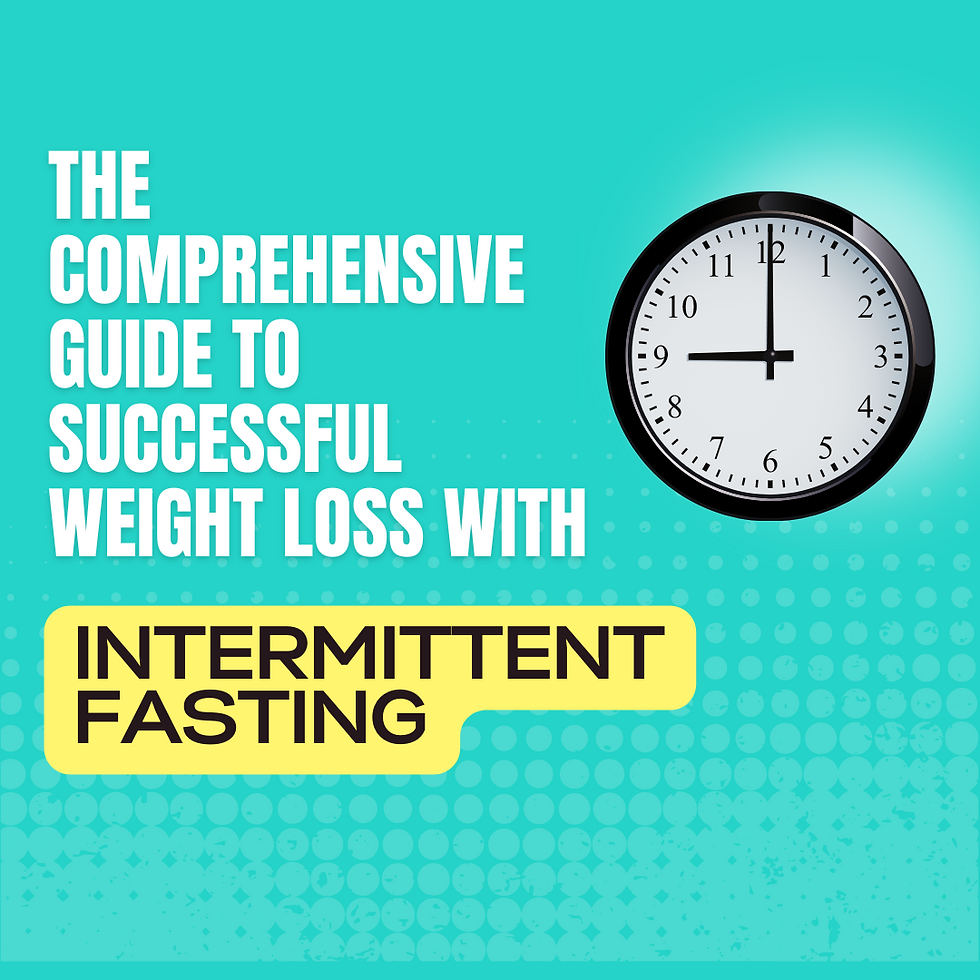
Intermittent fasting has emerged as a highly effective method for weight loss, backed by scientific research and countless success stories. In this detailed guide, we will delve into the world of intermittent fasting, exploring its various methods, benefits, and practical tips. By understanding the principles and implementing the recommended strategies, you can achieve your weight loss goals and embark on a journey towards a healthier and happier self.
Understanding Intermittent Fasting
What is Intermittent Fasting? Intermittent fasting involves alternating periods of fasting and eating within a specific time window. It is not a diet but rather an eating pattern that focuses on when to eat, rather than what to eat.
Methods of Intermittent Fasting a) 16/8 Method: This method involves fasting for 16 hours and restricting your eating window to 8 hours each day. For example, you may choose to skip breakfast and consume all your meals between 12 pm and 8 pm. b) 5:2 Method: With this approach, you eat normally for five days a week and restrict your calorie intake to around 500-600 calories for the remaining two non-consecutive days. c) Alternate Day Fasting: This method involves fasting every other day, where you consume minimal calories (around 500-600) on fasting days and eat normally on non-fasting days.
The Science behind Intermittent Fasting and Weight Loss Intermittent fasting promotes weight loss through several mechanisms:
Calorie Restriction: By limiting the eating window, you naturally consume fewer calories, creating a calorie deficit necessary for weight loss.
Increased Fat Burning: During fasting periods, the body taps into its fat stores for energy, leading to increased fat burning and weight loss.
Metabolic Adaptation: Intermittent fasting can boost metabolism, improving insulin sensitivity and promoting fat oxidation.
Designing Your Intermittent Fasting Schedule
Choosing the Right Method for You
Consider your lifestyle, preferences, and personal goals when selecting an intermittent fasting method. Experiment with different approaches to find the one that suits you best.
Establishing Your Eating and Fasting Windows
Determine the optimal eating and fasting windows based on your daily routine and preferences. For example, if you choose the 16/8 method, you might decide to eat from 12 pm to 8 pm and fast from 8 pm to 12 pm the next day.
Tips for Maintaining Consistency
Gradual Transition: Ease into intermittent fasting by gradually increasing the duration of your fasting periods over time.
Hydration: Stay hydrated throughout the fasting period by drinking water, herbal tea, or black coffee, which can help reduce hunger pangs.
Adjusting the Schedule: Adapt your fasting schedule as needed to accommodate social engagements or special events, ensuring long-term adherence.
Maximizing Weight Loss through Intermittent Fasting
Balancing Calorie Intake
Although intermittent fasting primarily focuses on when to eat, maintaining a calorie deficit is essential for weight loss. Pay attention to portion sizes and choose nutrient-dense foods to support overall health and satiety.
Meal Planning and Nutrient Timing
Plan balanced meals that include lean proteins, fiber-rich vegetables, whole grains, and healthy fats. Distribute your calorie intake evenly within the eating window to maintain stable energy levels and control hunger.
Combining Intermittent Fasting with a Healthy Diet
Intermittent fasting can be even more effective when paired with a nutritious and balanced diet. Consider approaches like the Mediterranean diet or a plant-based eating plan to optimize your weight loss journey.
Overcoming Challenges and Staying Motivated
Managing Hunger and Cravings
Stay Hydrated: Often, feelings of hunger can be mistaken for thirst. Drink water or herbal tea when hunger strikes.
Distract Yourself: Engage in activities or hobbies that keep your mind occupied and divert your attention from food.
Balanced Meals: Include protein, healthy fats, and fiber-rich foods in your meals to promote satiety and reduce cravings.
Emotional Eating and Mindful Eating Practices
Address emotional eating by developing mindful eating habits. Pay attention to your body's hunger and fullness cues, and focus on savoring each bite, allowing yourself to enjoy and appreciate the food you consume.
Incorporating Exercise and Physical Activity
Pairing intermittent fasting with regular exercise can enhance weight loss results. Engage in a combination of cardiovascular exercises and strength training to support overall health and maximize fat burning.
Long-Term Success and Maintenance
Transitioning to Maintenance Phase
Once you achieve your weight loss goals, it's essential to transition from a weight loss-focused approach to a sustainable maintenance plan. Gradually increase your calorie intake and find a balance that allows you to maintain your weight.
Monitoring Progress and Making Adjustments
Regularly assess your progress by tracking your weight, body measurements, and energy levels. If necessary, modify your fasting schedule or adjust your calorie intake to continue making progress.
Seeking Professional Guidance and Support
Consulting a healthcare professional, such as a registered dietitian or nutritionist, can provide personalized guidance tailored to your specific needs and health conditions. They can offer expert advice and support throughout your weight loss journey.
Conclusion: Intermittent fasting has proven to be a powerful tool for weight loss when implemented correctly. By understanding the different methods, designing a suitable schedule, and maximizing its benefits through proper nutrition and lifestyle choices, you can achieve successful and sustainable weight loss. Remember, it's crucial to listen to your body, stay consistent, and make gradual adjustments to ensure long-term success on your journey to a healthier you.
#IntermittentFasting #WeightLossJourney #HealthyLiving #LoseWeight #IntermittentFastingTips #WeightLossGoals #FitnessMotivation #IntermittentFastingBenefits #HealthyEating #MindfulEating







Commenti